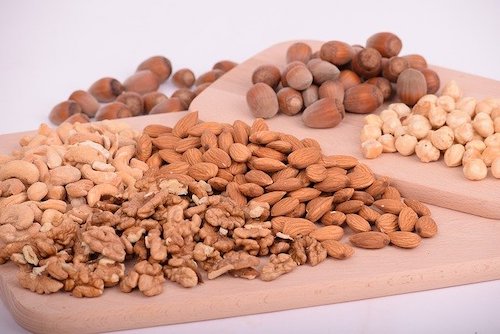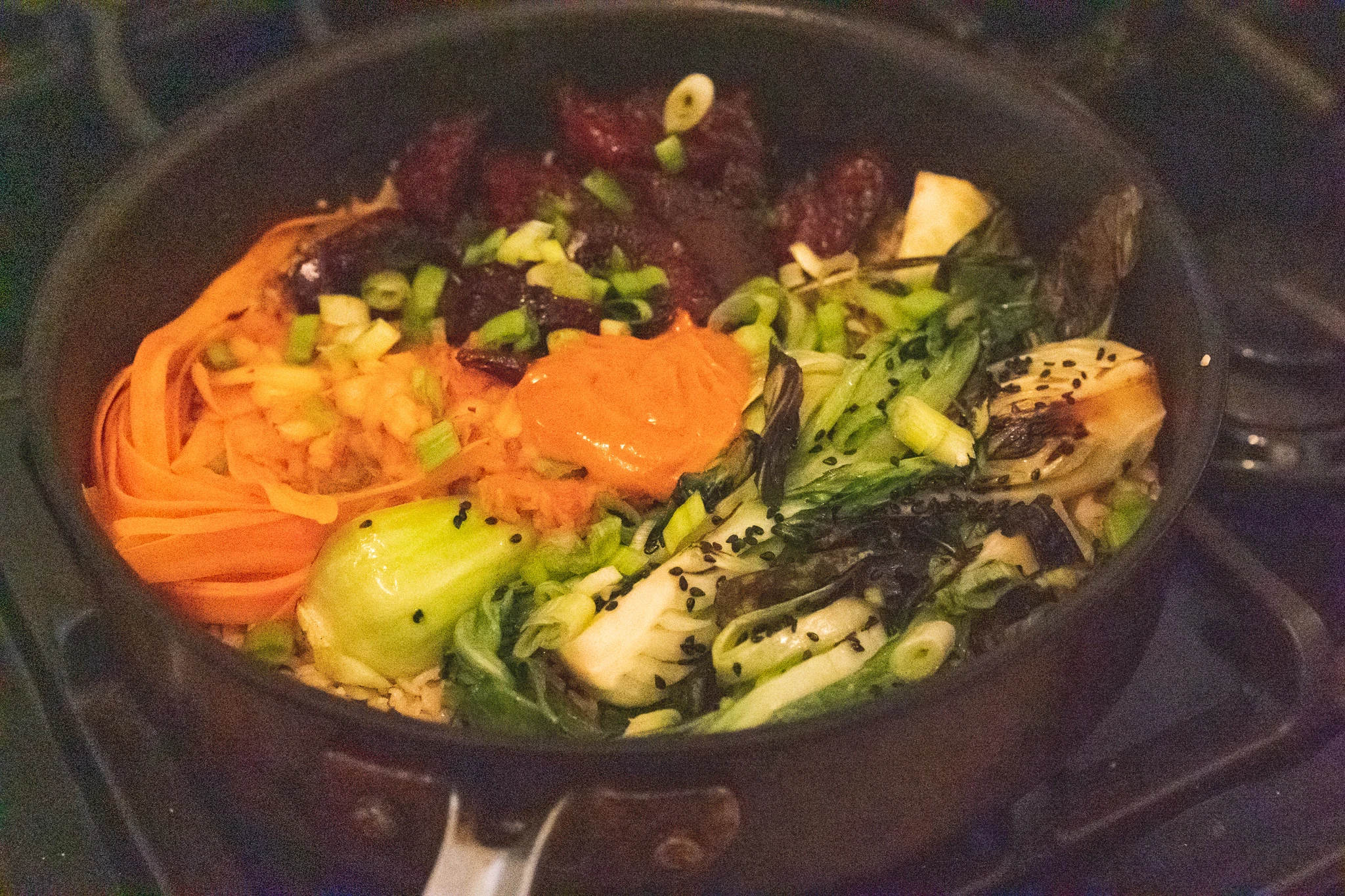Ever notice the small bold print under a product’s ingredient label? The one that highlights certain ingredients? It may say something like: “Contains soy and milk. Manufactured in a facility that processes tree nuts and wheat.” This labeling refers to the Big 8 food allergens and includes. These include milk, eggs, fish, shellfish, tree nuts, peanuts, wheat and soy.
Because these 8 foods account for 90% of food sensitivities, all processed foods must include this declaration on the label. Let’s investigate the reasons these foods contribute to so many food allergies and sensitivities.
The Big 8 Food Allergens
Milk
Let’s start by saying that milk is for cows. Humans digestive systems simply are not designed to effectively break down the proteins in cow’s milk.
Milk is the most common food allergen in infants below the age of three. While some children outgrow the allergy, many adults have an intolerance or allergy to milk. In many people, milk triggers an immune reaction against the protein casein, or an inability to metabolize the milk sugar lactose (lactose intolerance).

Symptoms of milk allergy include skin, gastrointestinal, respiratory or systemic reactions, and in rare cases, anaphylaxis.
Fortunately, there are a variety of tasty and nutritious plant-based milks. These include a variety of grain and nut-based alternatives:
Eggs
Like milk, eggs top the list of allergens in infants and young children. This allergy may disappear as a child approaches the age of 6, but not for everyone.
Egg allergy is a IgE-mediated food allergy. This means that consuming eggs triggers the production of Immunoglobulin E antibodies, which results in a histamine release. Typically the proteins that trigger the reaction come from the egg white. Symptoms range from digestive discomfort to itching, eczema, rash, vomiting, asthma, and in rare cases anaphylaxis.
Choosing an egg substitute depends on the use.
- Commercial egg replacers, such as Just Egg, usually work in most recipes.
- Applesauce or mashed banana works well in many baked goods.
- Vinegar and baking soda can produce a leavening effect in cakes and breads.
- Aquafaba (the liquid in a can of chick peas) works to replace egg whites.
- Yogurt works as a binder to keep foods moist.
- Flax eggs fit the bill in a variety of recipes and add a dose of added nutrition.
To make flax eggs, combine 5 teaspoons finely ground flaxseeds with 6 tablespoons hot water. Allow to sit for 5-10 minutes until it develops an eggy consistency.
Fish
The fish muscle protein parvalbumin is to blame for the majority of fish allergies. Because almost all fish contain this protein, an allergy to one type of fish usually means an allergy to all fish.
Most fish allergies result in gastrointestinal upset, but some are more severe.

Shellfish
Shellfish include crustaceans, such as shrimp, crab, and lobster. Some people may also react to certain mollusks, such as snails and scallops.
A shellfish allergy is similar to a fish allergy. However, the culprit protein is tropomyosin. Additionally, allergies to shellfish tend to be more severe than those to fish. Symptoms range from mild local reactions in the mouth, digestive and respiratory symptoms, to severe life-threatening reactions.
Tree Nuts
Nuts represent one of the most important group of allergens worldwide. It includes a variety of nuts and drupes (actually a type of seed), such as Brazil nuts, chestnuts, hazelnuts, pine nuts, and walnuts, almonds, pecans, cashews, and pistachios.

In peanut and tree nut allergic reactions, the body is unable to recognize one or more proteins, which triggers an immune system response. Nut allergies can be very severe because only a small amount can produce a reaction in many cases. In fact, nuts are the only food on the Big 8 Food Allergen list that can elicit a reaction from skin contact or inhalation.
Skin reactions are the most common symptom of nut allergy, however, severe respiratory symptoms and anaphylactic reactions can occur in more extreme cases.
A variety of seeds are the best alternatives to nuts. Pumpkin and sunflower seeds can add a flavorful crunch to many recipes and snacks. Try dried fruit or oats in granolas, salads, and baked goods.
Peanuts
Peanut allergies are the most common food allergy in children. Peanut allergies are not only one of the most common, but also most severe reactions in those who suffer from it. Like tree nuts, it doesn’t take much to elicit a reaction.
Symptoms of peanut allergy are similar to those of tree nuts as well.
Peanut butter lovers, check out some of these alternatives. If you can eat tree nuts, try another nut butter, such as almondor cashew butter. For those avoiding all nuts, sunflower butter (or tahini) or pumpkin seed butter.
Wheat
Gluten protein is the cause of the vast majority of wheat allergies. Sensitivities can range from mild to severe, such as in the case of individuals with Celiac disease.
Like eggs, wheat is an IgE-mediated allergy that can cause a host of systemic symptoms. Gluten allergies or sensitivities may manifest as gastrointestinal discomforts, fatigue, brain fog, migraines, skin rashes, and more. To learn more about the risks of gluten, check out this detailed post.

Years ago, a gluten allergy meant eliminating a slew of foods from the diet. Fortunately, there are plenty of gluten-free options available for breads, crackers, cereals, and other baked goods now. In baking the cup-for-cup type of gluten free flours offer a simple alternative with surprisingly good results. You can also opt for using other flours or making your own blend.
Soy
Soy can present a challenge because it is widely used in so many foods and personal care products. Children, in particular, may be sensitive to soy proteins that can elicit an Ig-E allergic reaction. Many children outgrow this sensitivity as their systems mature and produce enzymes necessary to digest soy protein.

Most soy allergies produce mild symptoms, such as tingling in the mouth, hives, swelling of the mouth and face, skin flushing, and respiratory and digestive complaints. In rare cases, soy allergies may result in anaphylaxis.
It’s no secret that I eat soy and you’ll find it in many of the recipes on this blog. Hear me out. The prevalence of processed soy in so many foods can give it a bad rap. The main issue is the highly processed GMO soy that dominates our food supply. If you select non-GMO, organic soy sources, I believe the risks are minimal. Check out For the Love of Tofu and Debunking the Myths About Phytoestrogens for more information.





